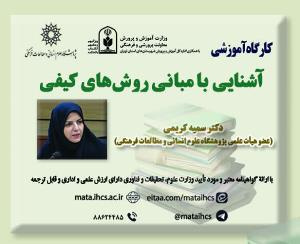توزیع پی بست های ضمیری کردی موکری در گروه فعلی در چارچوب نظریه بهینگی (مقاله علمی وزارت علوم)
درجه علمی: نشریه علمی (وزارت علوم)
آرشیو
چکیده
واژه بست ها به عنوان عناصری که پل ارتباطی میان حوزه های مختلف دستور زبان بوده و به شیوه های مختلف به میزبان خود پیوسته می شوند، مورد توجه زبان شناسان قرار گرفته اند. از این رو، تعامل آن ها با میزبان هایی از مقوله های گوناگون و قرارگیری در جایگاه دوم با توجه به نوع حوزه عملکردشان جالب توجه است. مانند دیگر زبان های ایرانی، کردی موکری نیز به نظام واژه بستی مجهز است و واژه بست ها در زبان موردِ اشاره از قابلیت حرکت بالایی برخوردارند. مقاله پیش رو، در تلاش است تا پس از شناسایی پی بست های ضمیری در نظام واژه بستی کردی موکری، جایگاه آن ها را به کمک محدودیت های نظریه بهینگی در گروه فعلی تعیین نماید. در این مقاله، نخست، پی بست های ضمیری در نظام واژه بستی کردی موکری شناسایی می شوند. سپس، به بررسی توزیع و نقش های مختلف این واژه بست ها در زبان موردِ اشاره پرداخته می شود. پس از آن، جایگاه پی بست های ضمیری در حوزه های فعلی -گروه فعلی دارای جزءِ پیش فعل یا پیش وندهای منفی ساز ( n æ -, na- ) و پیش وندهای التزامی و امری ( bi- ) و گروه فعلی بدون جزءِ پیش فعل- به کمک محدودیت های نظریه بهینگی مورد بررسی قرار می گیرد. محدودیت های «عدم حضور واژه بست در ابتدای حوزه»، «حفظ یکپارچگی میزبان» و«حضور واژه بست چپ ترین لبه حوزه» در تعیین جایگاه واژه بست نقش دارند. این مقاله بر آن است تا به دو پرسش اصلی پاسخ دهد: نخست اینکه، آیا محدودیت های نظریه بهینگی کفایت لازم در تعیین جایگاه واژه بست را دارند؟ دوم آنکه، آیا در نتیجه رقابت محدودیت های مذکور واژه بست در جایگاه دوم قرار می گیرد؟. این پژوهش به روش توصیفی- تحلیلی و کتابخانه ای انجام شده است. در گردآوری داده ها از شمّ زبانی نگارنده اصلی مقاله به عنوان گویشور کردی موکری و نیز گویشوران این زبان بهره گرفته شد. افزون بر این، از کتاب ها، مجله ها و نوشتارهای وب گاه ها یادداشت برداری شد و حدود 10 ساعت صدای گویش وران گویش مورد نظر ضبط گردید.Mukri Pronominal Enclitics distribution in VP: An Optimality Theoretic
Since clitics interconnect different modules of the grammar and are hosted by various hosts from different categories, they have attracted the attention of many linguists. Besides, their interaction with their hosts and positioning in the second position seems interesting. Central Kurdish (CK) like some other Iranian languages such as Persian, Vafsi, among others have two sets of Person Agreement Markers (PAM), a Direct set and an Oblique set, sometimes also called Set 1 and Set 2 , respectively. In Mukri Kurdish like other Iranian languages clitics can be found. Mukri clitics are very mobile and can appear in different domains. The previous scholarship on the clitic system of Kurdish have been done by different scholars. A review of the literature on CK reveals that the role of clitic PAMs has been surveyed along four major aspects: (i) the listing of clitic functions; (ii) the grammaticalization of clitic PAMs; (iii) the correlation between clitic PAMs and the nominal case system; (iv) the role of clitic PAMs in the alignment system. The present paper investigates the distribution of Mukri pronominal enclitics using Optimality Theory constraints in the VP. The constraints which play role in clitic placement are NonInitial (cli,VP), Integrity (VP) and LeftMost ( cl i , L,VP). The VPs under discussion can contain a preverbal, negative maker prefixes ( ne- , na- ), subjunctive and imperative prefix ( bi- ) or only a verb. The research method of this study is descriptive – analytic and fieldwork. Competition of the constraints which play role in placing Mukri pronominal clitics in the VP showed that the constraints NonInitial (cli,VP), Integrity (VP) in hierarchy of constraints dominate LeftMost ( cl i , L,VP) but none of constraints NonInitial (cli,VP), Integrity(VP) dominate each other. The analysis revealed that Mukri Kurdish pronominal clitics are placed in the second position in their VP.







